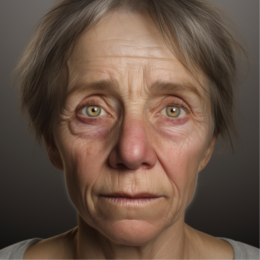How to Stop Tachycardia (Find Out Here!)

According to the American Heart Association, about 2.7 million people in the United States are living with atrial fibrillation, a common type of tachycardia, in 2023. However, it’s essential to note that the prevalence of tachycardia increases with age, with the highest rates seen in individuals aged 65 years and older.
What Is Tachycardia?
Tachycardia refers to a high resting heart rate. While it’s normal for your heart rate to increase during exercise or stress, when these episodes occur without an obvious trigger or last for prolonged periods, they might be signs of an underlying heart condition.
What Is Ventricular Tachycardia?
Ventricular tachycardia is a more severe type of tachycardia that originates from the lower chambers of the heart, known as the ventricles. This form can lead to severe complications, like sudden cardiac arrest if left untreated (American Heart Association, 2023).
What Is Sinus Tachycardia?
Sinus tachycardia is a type of tachycardia where the rapid heartbeat originates from the sinus node, the heart’s natural pacemaker. This is usually a response to stress, medications, or physical activity and may not indicate a serious heart problem.
What Is Supraventricular Tachycardia?
Supraventricular tachycardia, another form of tachycardia, originates above the ventricles, typically in the atria. Episodes can start and stop abruptly, causing palpitations, fatigue, or shortness of breath (Cleveland Clinic, 2023).
Statistics:
- The Cleveland Clinic notes that Supraventricular Tachycardia (SVT) is quite common, affecting approximately 2 out of every 1,000 people. Although this condition is generally not life-threatening, it can lead to serious complications if left untreated, such as heart failure or stroke.
What Causes Tachycardia?
Mayo Clinic reports that factors such as excessive consumption of alcohol or caffeine, smoking, and the use of recreational drugs can increase the risk of tachycardia. Moreover, it states that other medical conditions, including hyperthyroidism, certain lung diseases, and the overuse of certain medications, could also lead to tachycardia.

How to Stop Tachycardia
Now that we’ve defined and understood these terms, how can tachycardia be stopped or managed?
- Regular exercise: Physical activity is vital for maintaining a healthy heart rate. The American Heart Association recommends at least 150 minutes of moderate-intensity aerobic or 75 minutes of vigorous activity each week.
- Healthy eating: Consuming a diet low in salt, saturated fats, and cholesterol can help maintain a healthy heart and decrease the risk of tachycardia. Adding more fruits, vegetables, and whole grains to your diet can make a significant difference.
- Avoid harmful substances: Reduce your intake of caffeine, alcohol, and avoid smoking. These substances can directly lead to episodes of tachycardia.
- Stress management: Regular stress-reducing activities like yoga, meditation, or deep-breathing exercises can also significantly reduce your heart rate and prevent episodes of tachycardia.
- Medication and medical procedures: Depending on the severity of the condition, doctors may prescribe beta-blockers, calcium channel blockers, or other medications to control the heart rate. In severe cases, procedures like cardioversion or ablation might be recommended (American Heart Association, 2023).
Statistics:
- Mayo Clinic (2023). “Tachycardia: Causes.” Mayo Clinic reports that factors such as excessive consumption of alcohol or caffeine, smoking, and the use of recreational drugs can increase the risk of tachycardia. Moreover, it states that other medical conditions, including hyperthyroidism, certain lung diseases, and the overuse of certain medications, could also lead to tachycardia.
- American Heart Association (2023). The American Heart Association recommends that individuals incorporate regular physical activity and a heart-healthy diet into their lifestyle as preventive measures against tachycardia. The organization also highlights the importance of maintaining a healthy weight, as obesity can increase the risk of developing tachycardia.
- Mayo Clinic (2023). Stress management techniques, such as deep-breathing exercises, yoga, and meditation, are highly recommended by Mayo Clinic for reducing the risk of tachycardia. They state that long-term stress can have a direct impact on heart health, leading to conditions like tachycardia.
Final Thoughts
In conclusion, tachycardia can be a serious condition, but with awareness and appropriate lifestyle changes, it can be effectively managed. Always consult your doctor if you suspect you’re experiencing tachycardia. Remember, your heart health should always be a priority. Stay informed, stay healthy.
References:
- American Heart Association (2023). “Understanding Tachycardia.”
- Cleveland Clinic (2023). “Supraventricular Tachycardia: Management and Treatment.”
- Mayo Clinic (2023). “Tachycardia: Causes.”





